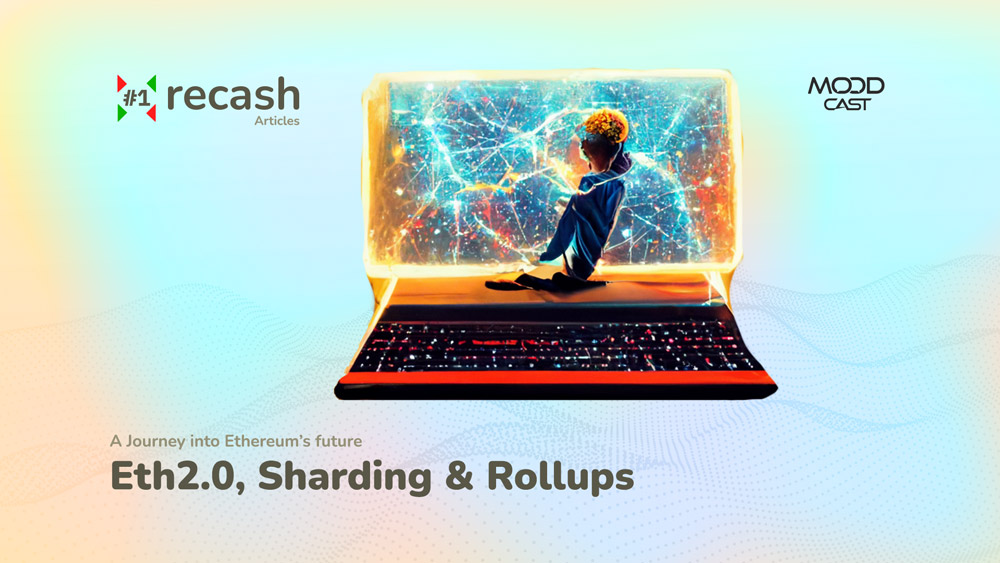Ethereum 2.0 was without a doubt an unprecedented event in blockchain history. With so many speculations around its inception, on the sustained POS security, decentralization risks, triple halving, and deflationary economy. It finally came to pass successfully after at minimum a year of delay. While many speculated the triple halving, similar to BTC halving, would result in a bull market, other community members talked of a coming bearish market which was the objective market response to its outcome. In this article, we discuss the future of Ethereum 2.0 with the new POS consensus mechanism and what we should expect next.
Achieving The Etherium Vision
The vision of Ethereum is still going strong to push the smart contract blockchain into the mainstream. To achieve this goal, Ethereum needs to bring about thousands of transactions/second for scalability, become more sustainable, and on top of all, maintain its security which in ETH 1.0 was achieved by a robust POW (Proof of Work) consensus. Right out of the bat, ETH 2.0 brought about blockchain sustainability while maintaining its core security features with over 14,500,000 ETH being staked by more than 435,000 validators. After all, this is a blockchain that’s committed to securing more than $163.63 billion from the crypto economy most of which are staked in evergrowing Defi protocols, NFT contracts, and ERC20 tokens. However to fulfill the vision ETH 2.0 needs to overcome another important step down its journey, and that is scalability.
As we all know the 2nd largest blockchain enables only 15 transactions per second. That is far less than its intended target of thousands. To overcome this the Serenity development roadmap is aiming to fulfill Sharding, a specific feature that together with rollups is expected to result in true scalability and finally provide the platform for mainstream adoption of Ethereum.
Developement of Sharding
After the merge of ETH 1 and ETH 2 into a single chain, the distinction between the two Ethereum networks is no longer the case, i.e. there is only one Ethereum. To limit this confusion to the general public, the community updated these terms respectively:
- ETH 1 is now the ‘execution layer’, which handles transactions and execution.
- ETH 2 is now the ‘consensus layer’, which handles proof-of-stake consensus.
With the merge being LIVE, the next phase for Ethereum development is to ship the Sharding, which is estimated to occur between 2023 to 2024 (if on time!). Sharding is a multi-phase upgrade to improve the scalability and capacity of the Ethereum Mainnet. Sharding is essentially securing the distribution of data storage requirements, a rollups enabler with a promise of cheaper transactions. Ultimately, It will cause easier operational nodes. These features empower rollups to benefit from the security livelihood of the Ethereum Mainnet while proving much cheaper gas costs.
But what Sharding is exactly?
As discussed in the Ethereum Docs, ETH 2.0 rather than being a single chain, will be dozens of parallel chains called shards. These sharded chains will process transactions on Ethereum 2.0 and connect back with the beacon chain. There would be up to 64 parallel chains and the coming of Sharding promises to fundamentally sky-rocket the transaction throughput of the Ethereum system. Each validator would be operating on a single shard at a time, verifying transactions that occur on that specific parallel chain. To remove the 51% stake attack on a shard by validators, the beacon chain will randomly allocate validators to each shard in a cycle.
Shards will give Ethereum more capacity to store and access data, but they won’t be used for executing code.
Ethereum Economy Landscape
Many updates are already happening to Ethereum after the merge, and it’s probably not too long till we feel the change. while the average block time would remain around 12 seconds, there is going to be an increase in transactions per second. The burning of ethereum on each transaction will reduce the eth in circulation. It’s been mentioned this will cause a deflationary state for ethereum, which in the long run is speculative to pump to native ETH token’s value. Validators’ reward has been dramatically decreased and they are more encouraged to get compensated by receiving network gas fees.
With all that in mind, the main purpose of Ethereum 2.0 is to dramatically expand the throughput of its ecosystem, by orders of magnitude. While this is necessary for the protocol to become a “world computer”, it opens up questions about the incentive structure for Ethereum token pricing.
If transaction throughput is super high, and fees are pretty low, users don’t need many Ethereum tokens to run dapps. There’s this interesting trade-off: high fees make dapps less attractive and provide room for competitors to take market share, while low fees potentially decrease the demand for Ethereum tokens.
However, the running validator is a good incentive for Ethereum investors to hold the tokens for the long term on Ethereum 2.0. They can hoard tokens and take them to validation to earn a yield of more tokens. So, for as long as the system remains functional, there will likely be plenty of people that want to hold the tokens and earn a yield on them. In addition, Ethereum tokens can be used for collateral in Defi borrowing. These functions serve as a liquidity sink for Ethereum tokens in the ecosystem and are part of Ethereum’s attempt to be both a utility commodity and a monetary asset.
In theory, if Ethereum 2.0 dapp usage grows substantially over time, and the protocol retains significant market share against competitors, Ethereum tokens should appreciate in price to some extent as well, benefiting from these liquidity sinks, collateralization, and Metcalfe’s law.
A New Realm of Blockchain Transactions
All the matters in the discussion are deemed to take Ethereum into a totally different realm and through its inception, we can imagine the growing adoption of roll-ups and sidechains on the horizon.
